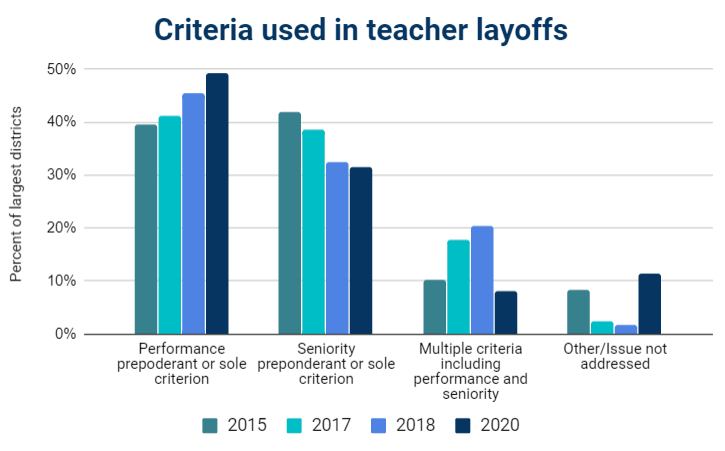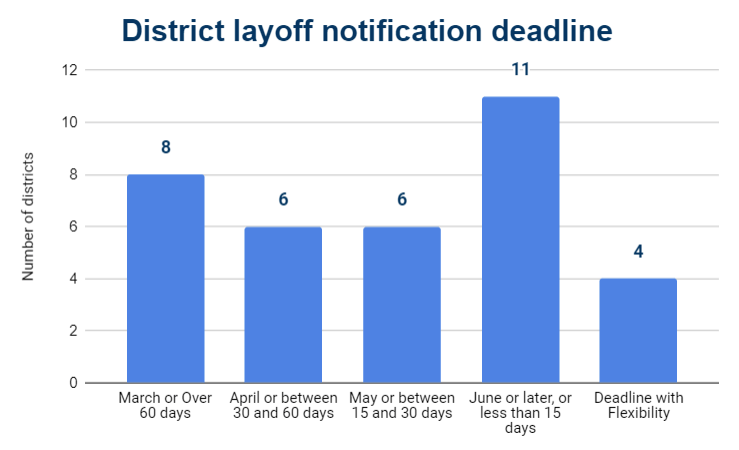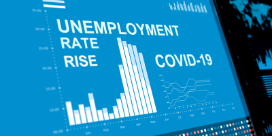The coronavirus pandemic has plunged the world into a recession. Unsurprisingly, our country’s public school system, along with the rest of the economy, is bound to experience the ensuing economic fallout sooner or later. This means that for many school districts, layoffs may be necessary.
No district wants to lay off personnel. But if it ought to be done, NCTQ (along with other education researchers and policy advocates) has laid out ways to make layoff decisions that cause the least harm to students, provided that teacher quality considerations are prioritized. In this District Trendline, we examine the layoff policies of 124 large school districts across the country: the 100 largest districts plus the largest district in each state.
How do districts currently lay off teachers?
Since we began publishing the District Trendline on the topic of layoffs, it is encouraging to see that more districts have been moving in the direction of utilizing teacher performance measures when reducing their teacher workforce. While five years ago only 39 percent of our district sample specified performance as a main factor in the event of layoffs, now 49 percent of our sample does.

Still, 30 percent of our sample continues to use seniority as the top criterion to inform their layoff decisions. The remaining 20 percent of districts, such as Little Rock in Arkansas, use a mix of criteria, with the preponderant factors being both performance and seniority, but also in some cases, other measures such as attendance records or credentials.
The uncertainty surrounding this year’s potential layoff process
The current situation is too uncertain to know what to expect in terms of teacher layoffs. Will students and teachers come back to the classroom? Will higher risk teachers seek early retirement? Will implementing social distancing generate an increased demand for teachers, but no budget to cover it?
Budget cuts are not a done deal either. During the 2008 recession, the government bailout afforded public schools some breathing room and layoffs were delayed. It is uncertain whether that will happen this year. Also, some districts have multi-year budgets, with next year’s budget already in place, which may cover staffing needs.
It’s also important to note that for many districts, the deadline to notify teachers of an impending reduction in workforce has passed. This is the case for 20 of the 35 districts in our sample that have explicit notification deadlines in the case of layoffs. For these districts, reductions in force will either be a moot point, or will be delayed until a subsequent year. Some districts such as Jordan (UT) and Osceola County (FL) have built in explicit emergency flexibilities to those deadlines. For example, California has a provision in its education code that allows for the extension of their notification deadline to August 15, should budget cuts necessitate that event.
For most of the 124 districts in our sample, these layoffs decisions will likely have to be delayed until the spring of 2021.

What can districts do to prepare for potential layoffs?
When in-person school was shut down earlier this year to curb the risk of coronavirus contagion, it complicated the districts’ abilities to observe their teachers and make performance evaluations. Therefore, even if all districts did consider performance as the main factor to inform layoff decisions, for many of them that information is not available.
Some districts are adapting their systems in the face of the current reality, in order to put students first and look out for their teachers’ well-being in a continued commitment to teacher quality. Dallas Independent School District‘s policies, for example, already consider teacher performance as the main criterion for layoffs decisions, and during this era of remote instruction the district has not given up on formative teacher performance evaluations, encouraging continued informal teacher observation and feedback even in a remote setting.
Dallas Independent is not expecting any teacher layoffs, but the protocol they are now creating to ensure that teacher performance data is available in the 2020-21 school year could be a model for other districts. This ensures there is ample data available to inform a variety of decisions that may arise. The Dallas teacher performance rubric has been adapted to assess the delivery of synchronous and asynchronous online learning, and they are launching a pilot during the summer to train evaluators on these practices so that they can “continue to provide formal and informal observation feedback and coaching that supports growth regardless of the adopted instructional model for the 2020-21 school year,” Suzy Smith, Dallas’ Director of Performance Management, shared in an email.
The uncertainty and potential delay of school districts’ reductions in force decisions until next spring presents an opportunity. It is the opportunity to revise layoff policies now, ensuring that they do not disproportionately harm low-income students or students of color, as purely seniority-based policies tend to do. It is also the opportunity to devise creative ways to assess teacher performance in any and all instructional scenarios according to what school may look like next year, as Dallas is doing. These are opportunities that should not be overlooked if districts want to minimize the negative impact that potential layoffs would have on students throughout the country.

